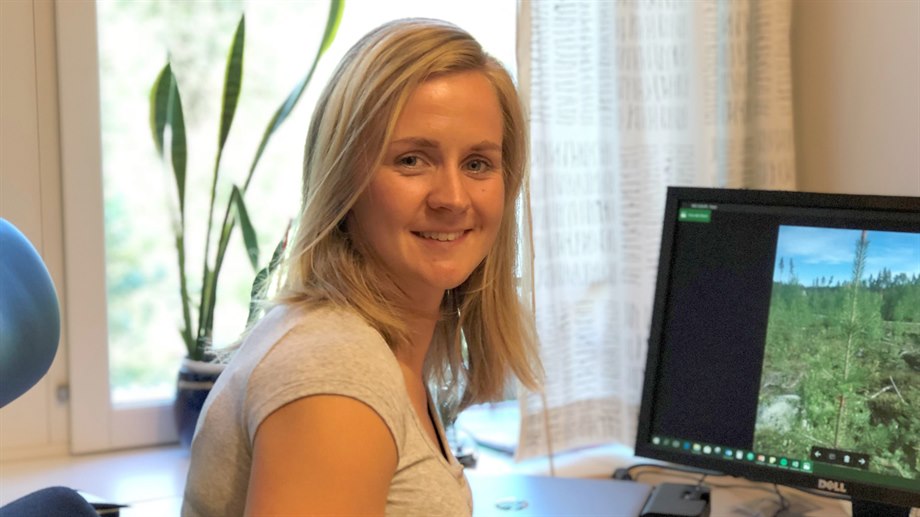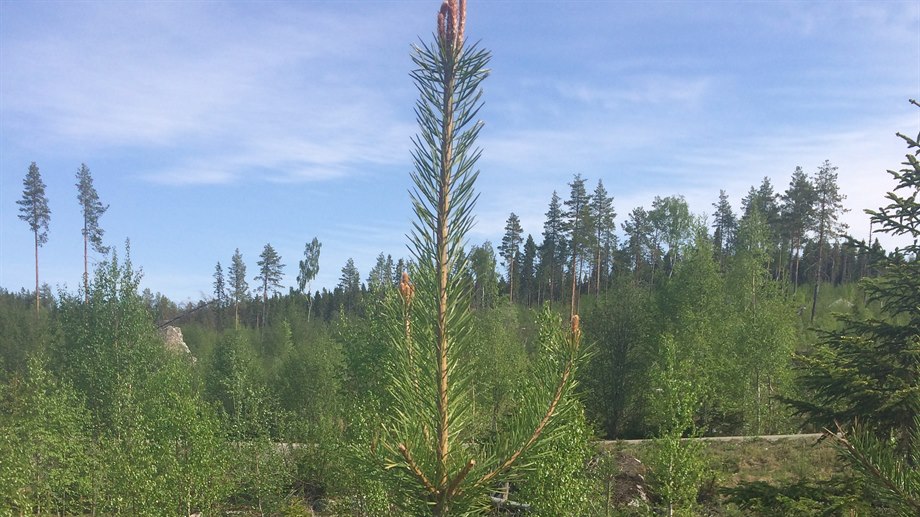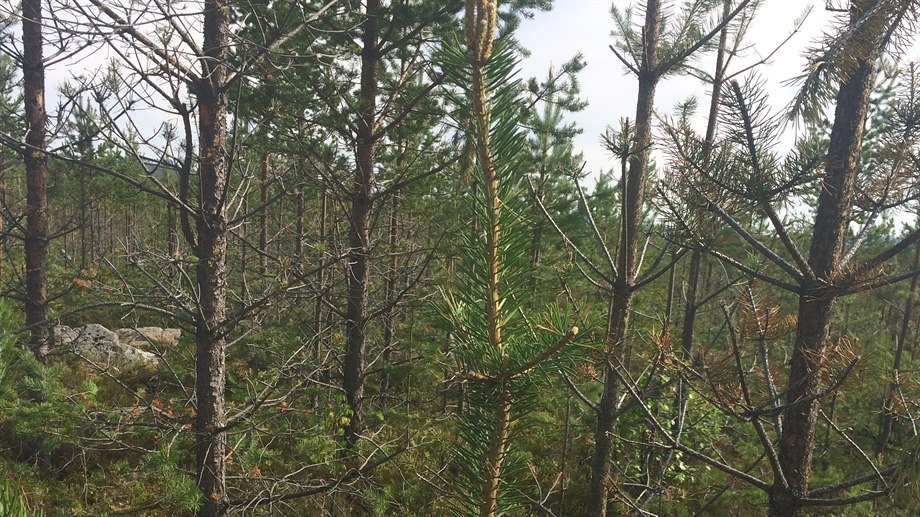av
Forests are protected from moose and field mouses with poison‑free methods
Matilda Lindmark is PhD student at Mid Sweden University. Her research area is forest damage caused by moose and field mouses.
Moose and field mouses are fond of forest plants during the winter season. The digestion of top crops on pine trees is halved using the new version of Antibeta therapy by Matilda and the researchers in the BESKA research project.
In the research project, studies and analyzes are being carried out to develop a poison-free preparation that counteracts the moose and field mouse grazing on forest plants. The first trials were conducted in December 2017 on pine tree forest outside Junsele on SCA's ground, where there has been a heavy pressure. Nearly 2000 pine tree plants were included in the experiment. The patented preparation is Antibeta and it is being developed in collaboration with the spin-off company Sylvestris, which was started by Kerstin Sunnerheim researcher at Mid Sweden University.
Top shot is treated with Antibeta
Antibeta is produced from forest industry residues and contains only natural, non-toxic ingredients that consist of natural defense substances from the forest. Remedies are taken from the trees to the new generation of forests. The subject is a spray that, by smell and taste, diverts moose from eating to the top shot.
"The preliminary results show that we can halve the bite on top scots when we treat them with Antibeta,"
says Matilda Lindmark. "There has been major injury in the area during the winter, almost 50 percent of the pine tree plants had fresh injury injuries. In our study, injury rates on top crops decreased from 14 percent to 7 percent when comparing untreated and treated pine trees".
Moose grazes pine trees in winter, it is their main food during parts of the winter. We want to protect the valuable top shot from moose grazing. The top shot is part of the future tribe and if the top shot get damaged it affects the quality of the future tree. By treating the top shot, they can try to persuade the moose to eat the side shots instead. The researchers do not want to reduce feed availability but protect the most economically valuable parts. The injuries last winter became extremely bad because the large snow depth who made it difficult for the moose to move. The mooses stayed to a greater extent in the same area, causing the injury to be more concentrated.
The research is conducted through operational field studies in forests and nursery schools. SCA is a partner company in the research project and they provide appropriate fields with high moose pressure, where Matilda conducts field studies that are subsequently analyzed at Mid Sweden University. The moose tribe is quite constant in Sweden and the research is not aimed at reducing or affecting the moose tribe. In the county of Västernorrland, about 11 percent of all pine trees receive injuries each year. By using natural substances from the forest we want to control the damage on top crops, thus reducing the conflict between the land owners interests and the nutritional requirements of the moose.
Nurseries have problems with field mouse
Field mouse eating forest plants is a problem at the nursery school for forests in our area. At SCA's nursery Bogrundet, about 100 million spruce and pine seedlings are produced each year. They are kept snow-covered on large metal frames outdoors in winter. Under the framework, a protected area is created where the field mouses can eat undisturbed during the winter. Within the research project, one tries to develop a poison-free and natural substance that, by smell and taste, scares field mouses from staying under the plants. Antibeta is one of the candidates studied by Matilda and the research group.
"We will treat the plants at Bogrundet in autumn 2018 before the snow comes," says Matilda Lindmark, "and we will test several different topics and analyze and compare the results of the evaluation. The problem has been around for a long time, and they have tried both raw traps, poison and even mink! An efficient and non-toxic agent is required that protects plants but who not is harmful to the environment".
Our way of developing forestry as a land owner is also important to study and draw lessons from. The mooses like to gather and stay in young pine forests in the winter.
"It is also important to discuss cultivation strategies with land owners to mix the pine trees with spruce and hardwood trees like birch," says Matilda Lindmark. "Then both the biodiversity and feed supply for the moose would increase. The eating would not be concentrated on pine trees alone, and both the moose, the environment and the landowners would feel better!"
Matilda Lindmark was born and raised in Njurunda and studied to forester at SLU in Umeå. After completing her education she worked for four years as a forestry manager at Södra skogsägarna in Småland. In November 2017, she moved back to Medelpad and started her PhD studies at Mid Sweden University. Matilda is PhD student in the research project BESKA - Combating forest damage in middle Sweden.
Beska - Combating forest damage in middle Sweden
The project is run by Professor Bengt-Gunnar Jonsson at Mid Sweden University and runs from 1 July 2017 until 30 September 2020. The project is funded with support from the Regional Structural Funds (ERDF) of 6.4 million SEK. Partner companies are the Swedish Forest Agency, Sweden's Agricultural University, Region Västernorrland, Region Jämtland Härjedalen, Callans Trä, Sylvestris, SCA Norrplant, Persson Invest Forest, Brattå Foundation.
Read more


